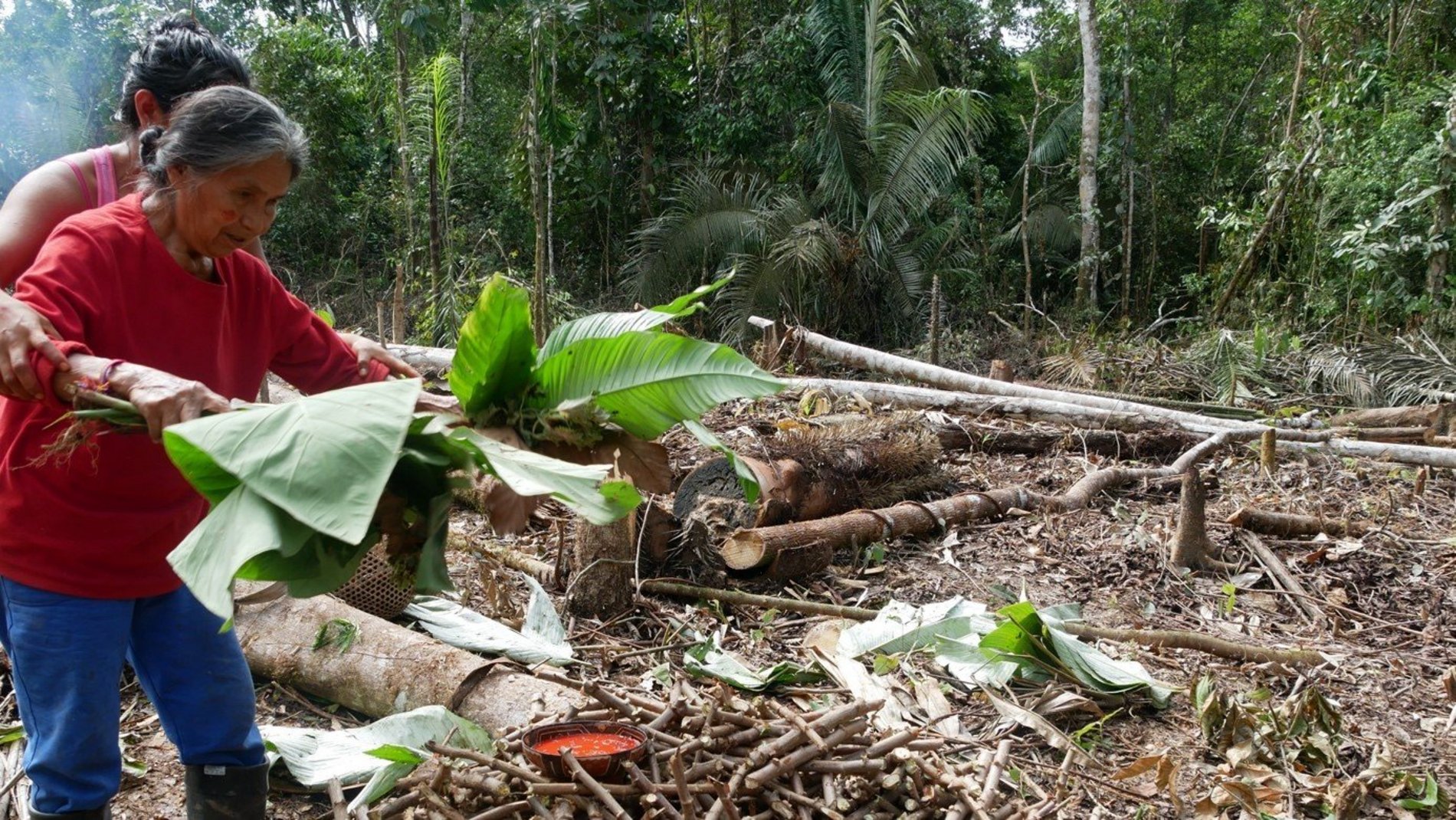Introducing Rights of Nature in Europe
By Cat Haas, Laura Burgers and Alex Putzer, Eco-Jurisprudence Monitor & University of Amsterdam & Sant’Anna School of Advanced Studies - December 2023
The world is in the midst of a legal revolution, wherein natural entities are increasingly being recognized as the subjects of rights rather than objects or property. This movement, known by various names such as Rights of Nature or Earth Jurisprudence, has gained significant traction in South America, but is also gathering support in Europe.
Among its pivotal milestones is the recognition of the rights of Pachamama (Mother Earth) in the 2008 Ecuadorian Constitution. Indigenous communities in North America have also undertaken similar initiatives, instituting, among others, the rights of Manoomin (wild rice) or the Magpie river. Noteworthy achievements in other regions include the 2019 Uganda National Environment Act, a 2019 Bangladeshi Supreme Court Judgment recognizing the rights of all rivers in the country, and historical reconciliation processes between the Indigenous peoples and the government of Aotearoa New Zealand, resulting in laws concerning the Te Urewara forest and the Whanganui river.
However, thus far, advocates for the Rights of Nature have had less success in Europe. It may come as no surprise that this continent has been somewhat resistant to this legal trend – after all, it is a continent historically influenced by thinkers like René Descartes, who prominently regarded animals as mere ‘machines’. European philosophical traditions have often emphasized a strict separation between humans and the rest of the natural world. The Rights of Nature oppose this worldview – instead, placing animals, plants, and ecosystems on the same plane as humans. A small but steadily growing number of European scholars, activists, and politicians are adopting and exploring the Rights of Nature perspective. The emerging mindset is increasingly influencing the European legal landscape.
Most of the data presented in the following is being taken from the Eco Jurisprudence Monitor, an open-access database that tracks Rights of Nature initiatives globally. As of December 2023, 44 European initiatives qualified for the movement. Nevertheless, we consider several additional early-stage efforts.
From the Rights of Non-human Animals to the Rights of Nature
Before the broader promotion of the Rights of Nature, there was the promotion of the more specific rights of animals. The ‘oldest’ initiative, dating back to 1988, involved German activists advocating for the recognition of the rights of seals in the German North Sea (‘Robbenklage’, → RoN and German civil society). Years later, in 2013, the Rights of Nature were almost simultaneously adopted by five towns in the United Kingdom: The objective of these soft law documents was to secure the present and future well-being of both local human and non-human communities. For example, the Falkirk Charter acknowledges the right to life of beings of every species. In Romania, in 2014, the national parliament debated the possibility of recognizing the legal personality of dolphins. In 2019, a group of legal scholars in France drafted a declaration on animals’ rights and issued a ‘Charter on the Law of the Living’ (Charte du Droit du Vivant). In 2022, the citizens of the Swiss city of Basel voted on the rights of primates. Even though this proposal was rejected by voters, it nonetheless reflects a growing awareness of the issue at hand.
With regard to the broader movement, unexpected support emerged when Pope Francis endorsed the Rights of Nature in his 2015 encyclical. In his Papal letter, he stated that a right of the environment does exist – note that this is very different from a right to the environment (the latter being a right held by humans). This statement reflects a changing zeitgeist that has been growing ever since. While the Eco Jurisprudence Monitor tracked a total of six initiatives between 2016 and 2020, there have been 30 in the past three years alone. To date, the most legally impactful initiative is the 2022 law for the rights of the Mar Menor, a saltwater lagoon in Spain. Considering many ongoing initiatives and the related media attention, the movement is set to grow in the years to come.
Constitutional Developments
Eight European countries – Finland, France, Ireland, Germany, the Netherlands, Portugal, Sweden, and Switzerland – are currently considering or have considered recognizing the Rights of Nature at a constitutional level. The movement in Finland involves a proposal by a NGO to amend the country’s constitution. In France, the National Assembly rejected a constitutional amendment in 2021, while in 2022, the Irish Citizens Assembly on Biodiversity Loss voted in favor of including rights of nature in their national founding paper. Four initiatives seek to amend the regional constitutions of German states, with one aiming to amend the national constitution as well. In the Netherlands, the Party for the Animals is currently drafting a proposal to include Rights of Nature in the Dutch constitution, and a number of political parties, including Volt, call for political support for grassroots initiatives. A Portuguese petition for the adoption of constitutional Rights of Nature has gathered limited support thus far. Despite repeated efforts by Rights of Nature proponents and Green Party proposalsin Sweden, the inclusion of Rights of Nature in the national constitution has yet to materialize. Switzerland is discussing similar changes, with an already submitted proposal under consideration. Despite these promising constitutional developments, it is important to note that almost half of the European initiatives have a more limited scope, most often taking place at the municipal level.
Heterogeneity in Initiators and Subjects
Much like the global Rights of Nature movement, the European movement is vastly heterogeneous. Firstly, a variety of institutions have initiated proposals for change. About two-thirds of cases are started by governmental entities, with one in six of those co-initiated by non-governmental organizations or other civil society groups. Special cases include artist collectives like the Dutch Embassy of the North Sea. Finally, several initiatives were put forward by religious entities, including statements by the Holy See, the Church of Sweden’s 2019 educational policy, the concluding document of the 2019 Amazon Synod (a gathering of church leaders held in the Vatican to address the state of the Amazon rainforest), and the World Council of Churches’ recognition of ecocide in 2019.
Moreover, these initiatives concern a variety of natural entities. Approximately 70% of measures pertain to Nature in general. For instance, a 2020 European Parliamentary Resolution speaks of ‘rights of ecosystems’, and the Swedish Sami parliament endorses the Universal Declaration on the Rights of Mother Earth, originally presented at the Bolivia World People’s Conference on Climate Change and the Rights of Mother Earth in 2010.
At the same time, some proposals focus on recognizing the rights of specific natural areas – with water bodies featuring prominently. Examples include the Loire in France, the Meuse river in the Netherlands, the Rhône river in Switzerland, and the Frome and Dart rivers in the United Kingdom. There are also initiatives on behalf of other natural entities, such as Lake Vättern in Sweden, the aforementioned Mar Menor Laguna in Spain, or the Rodden Meadow in the United Kingdom. A distinctive case regards Belgium, where a climate case was launched on behalf of, among others, 82 trees. The documents go so far as to cite the plants’ address: ‘the corded alder living in the rue de l’Arbre Benit in the municipality of Ixelles’.
Implementation Status and Enforcement
Lastly, we must note that despite the growing number of initiatives, very few have translated into binding legislation – in part due to some initiatives’ institutional contexts and the non-binding nature of some proposals. For instance, draft statutes proposed by political parties such as the Danish Alternative Party and the Irish Green Party include Rights of Nature language but are often not initiatives directly aimed at legislative change. Several initiatives are intentionally designed to be non-binding declarations, such as the aforementioned British Community Charters. Notably, in November of 2023, the Dutch municipality of Ejisden-Margraten adopted a motion of political rights of nature, and is set to appoint a guardian who will ensure the interests of nature to be at the forefront of all local decision-making processes.
We have yet to see the full potential of several initiatives across Europe. Looking ahead, the balance between soft and hard law will undoubtedly continue to shape the European Rights of Nature landscape for the foreseeable future. What is certain, however, is that the movement is here to stay.
Note: We follow the policy of various scholars and organizations, including the United Nations Harmony with Nature Programme, which write ‘Nature’ in uppercase to establish it linguistically as a subject (see, for instance, footnote 1 of the United Nations General Assembly Report A/75/266). This policy is further emphasized by contrast to a lower-case, anthropocentric, object vision of nature.
This is an updated version of a text originally published on 22 February 2022 on the IACL-AIDC blog: https://blog-iacl-aidc.org/nature-animals/2022/2/22/european-rights-of-nature-initiatives.
Cat Haas is the Director of the Eco-Jurisprudence Monitor. Linkedin.
Laura Burgers works on climate litigation and rights of nature as an Assistant Professor at the Faculty of Law, University of Amsterdam, Netherlands. LinkedIn.
Alex Putzer wrote his dissertation on the rights of urban natures at Sant’Anna School of Advanced Studies, Italy. LinkedIn.
Literature & Links
- Eco Jurisprudence Monitor: Eine interaktive, Open-Access-Datenbank, die global Initiativen für die Rechte der Natur erfasst.
- Alex Putzer, Tineke Lambooy, Ronald Jeurissen, and Eunsu Kim (2022): “Putting the rights of nature on the map. A quantitative analysis of rights of nature Initiatives across the world.” https://www.tandfonline.com/doi/full/10.1080/17445647.2022.2079432
- Jasper Mührel (2023): “Towards European Rights of Nature.” https://verfassungsblog.de/towards-european-rights-of-nature/
- Mihnea Tănăsescu (2022). Understanding the Right of Nature: A Critical Introduction.https://www.transcript-verlag.de/978-3-8376-5431-8/understanding-the-rights-of-nature/
- Craig Kauffman and Pamela Martin (2021): The Politics of Rights of Nature. Strategies for Building a More Sustainable Future. https://www.transcript-verlag.de/978-3-8376-5431-8/understanding-the-rights-of-nature/
- Laura Burgers & Jessica den Outer (2021). Compendium Rights of Nature; Case-studies from six continents, ins Deutsche übersetzt: Das Natur Klagt An!’ Der Kampf für die Rechte der Natur



